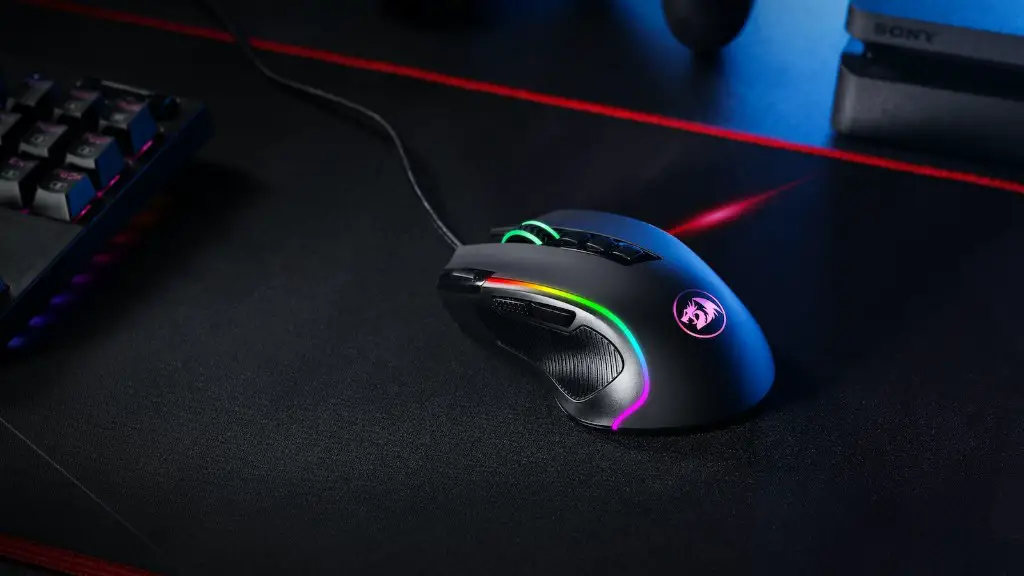Gaming monitors and TVs are two of the most popular devices for gaming, but what is the difference between them? The main distinction lies in their performance. Gaming monitors have faster response times and refresh rates, as well as advanced features specifically designed for gaming. TVs, on the other hand, provide more refined visuals for a more immersive experience.
When it comes to refresh rates, gaming monitors are typically equipped with higher refresh rates than TVs. Refresh rate is the number of times per second that the display refreshes on-screen information. This is important for smoother visuals as a higher refresh rate means faster response times, which can improve gaming performance. Gaming monitors are typically equipped with refresh rates of up to 240 Hz, versus TVs which have refresh rates of 60 Hz.
Gaming monitors also usually have faster response times than TVs, which is the amount of time it takes for the monitor to update an image. Because faster response times can reduce motion blur, they can be beneficial for gaming. Monitors usually come equipped with 1-4 ms response times, while TVs typically have much slower response times of 8-20 ms.
When it comes to features, gaming monitors have a range of features designed specifically for gaming. Some of these features include FreeSync, G-Sync, Black Stabilization, and multiple inputs. TVs on the other hand, do not typically have the same gaming specific features, although some TVs now come with advanced gaming features such as low input lag.
In terms of visuals, TVs tend to offer more refined visuals with better quality. This is due to the larger screens, higher resolutions, and better color accuracy compared to gaming monitors. TVs also typically offer better viewing angles due to their larger size, allowing users to view the same image from multiple angles.
Overall, gaming monitors and TVs provide different experiences for gamers. With gaming monitors, the emphasis is placed on performance with features such as high refresh rates and low response times. TVs on the other hand, offer more refined visuals and better viewing angles.
Resolution
When it comes to resolution, gaming monitors offer a range of resolutions from 1080p to 4K, depending on the monitor. Most gaming monitors range from 1080p to 1440p, although some offer QHD or 4K resolutions. TVs, however, typically offer a range of resolutions from HD to 8K.
In addition to resolution, gaming monitors also come with multiple inputs, making them more versatile. Most gaming monitors come with one or two HDMI ports and sometimes with a DisplayPort as well. TVs however, typically only come with a single HDMI port.
In terms of brightness, gaming monitors offer a maximum brightness of 350-400 cd/m2, while TVs typically range from 400-2000 cd/m2. As such, TVs are typically better for bright environments than gaming monitors, as they offer better visibility in bright conditions.
Finally, gaming monitors tend to have slimmer bezels, making them more aesthetically pleasing. TVs on the other hand, usually have thicker bezels, which make them appear bulkier. Additionally, TVs typically have thicker stands and bigger footprints, making them less space-efficient.
Panel Technology
Another important distinction between gaming monitors and TVs is the panel technology used. Gaming monitors typically use IPS, TN, or VA panels, while TVs usually use LCD or LED displays.
IPS panels offer wide viewing angles and better color accuracy, making them ideal for content creation. TN panels offer faster response times, making them better for gaming. VA panels offer a balance between IPS and TN panels, providing decent color accuracy and response times.
LCD and LED displays on TVs, on the other hand, provide better black levels and contrast ratios than TN or VA panels on gaming monitors. This makes them better for watching movies or shows, as they create more realistic and vibrant visuals.
In terms of color accuracy, gaming monitors typically offer better color accuracy than TVs. This is due to the built-in calibration options, allowing users to adjust color settings to their liking.
Another benefit of gaming monitors is the option to adjust other settings such as aspect ratio, response time, and refresh rate. This allows gamers to customize the display to their specific needs.
Finally, some gaming monitors come with the option to adjust the refresh rate on demand. This allows gamers to reduce the refresh rate when playing less demanding games, thus reducing power consumption and decreasing the chances of screen tearing.
Cost
In terms of cost, gaming monitors and TVs have a similar range of prices. The main difference is the types of features they offer, which can affect the price tag. For example, gaming monitors tend to be more expensive than TVs due to the range of features available.
As mentioned previously, gaming monitors come with faster response times and higher refresh rates, as well as features such as FreeSync and G-Sync. TVs, on the other hand, provide more refined visuals, but do not usually come with gaming features.
Another important factor to consider is the resolution. Gaming monitors typically start from 1080p resolutions, while TVs usually have higher resolutions, with many now offering 4K or 8K resolutions.
Finally, gaming monitors and TVs also differ in terms of size. Gaming monitors are typically available in full HD size or smaller, while TVs come in a variety of sizes, ranging from small to large. As such, TVs offer more flexibility allowing gamers to choose the size that best suits their needs.
Pros and Cons
Overall, gaming monitors and TVs both have their advantages and disadvantages. With gaming monitors, the main advantages are that they offer faster response times, higher refresh rates, and more gaming specific features. On the other hand, gaming monitors typically provide lower resolutions and less refined visuals.
TVs on the other hand provide better visuals and larger screens, but usually lack features such as FreeSync and G-Sync. They also usually have higher response times, making them less suitable for competitive gaming.
As such, the decision between a gaming monitor and a TV ultimately comes down to user preference. Gamers who prioritize performance should opt for a gaming monitor, while gamers who are looking for more refined visuals and bigger screens should opt for a TV.


